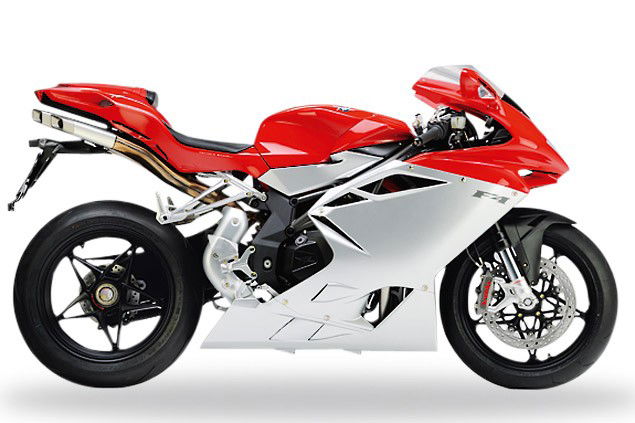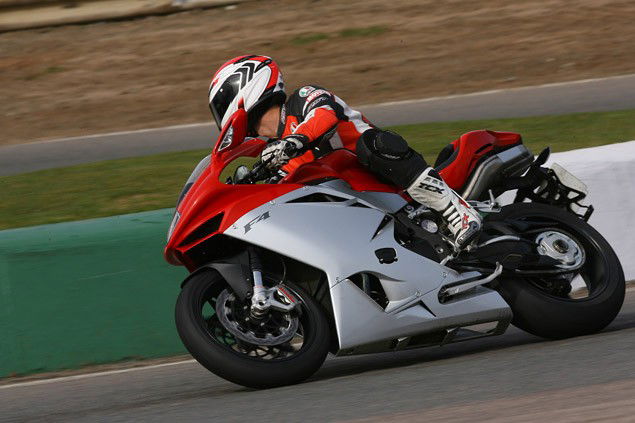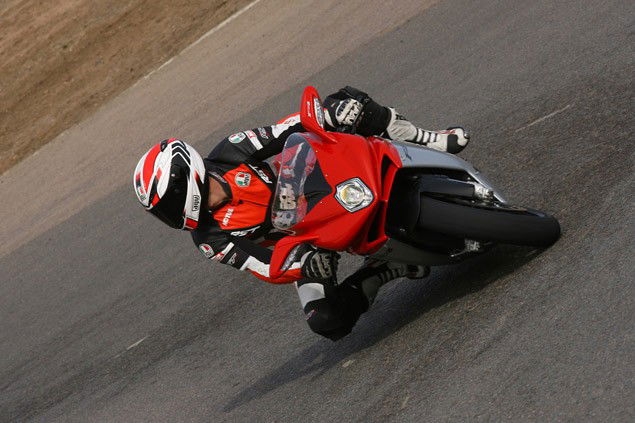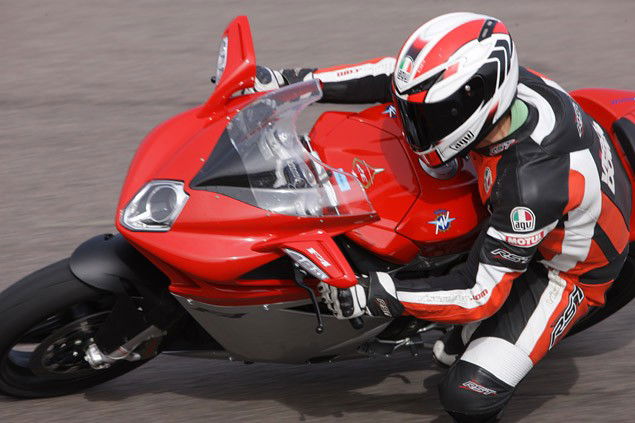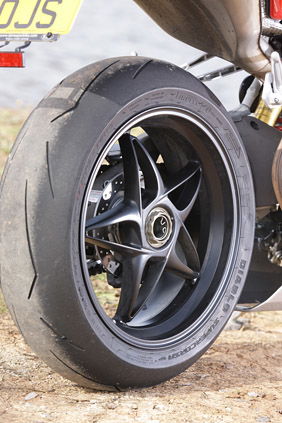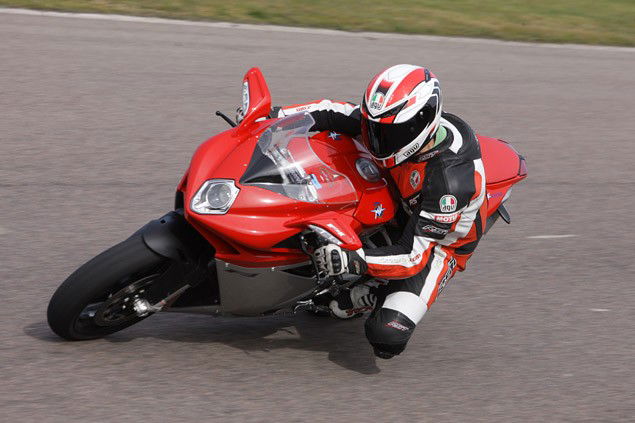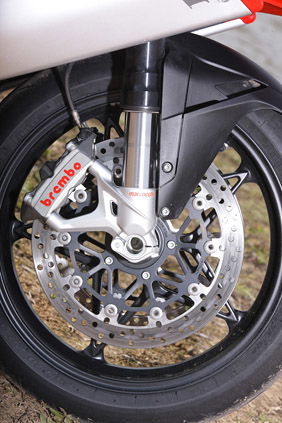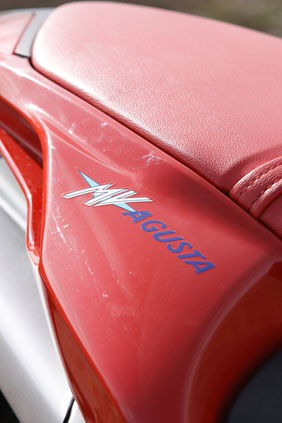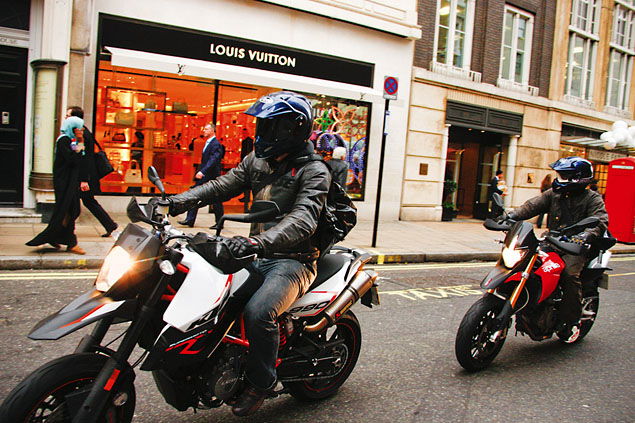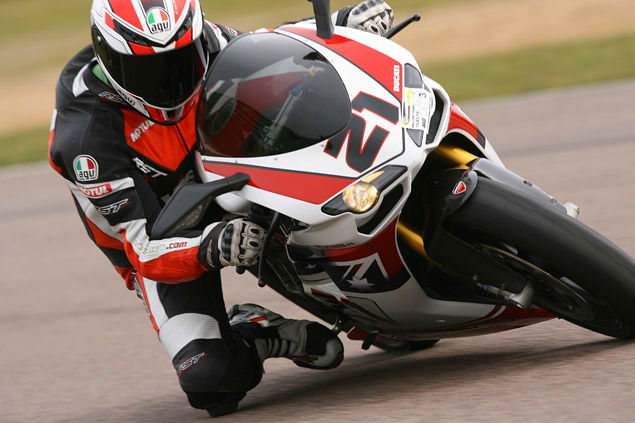2010 MV Agusta F4 1000 Mallory Park track test
Categorically better than its predecessor and properly in contention in the exalted company of the other European exotics. It filled Whit with confidence – and that is quite some recommendation


Engine
Things start to get lively with the F4 at 6,000rpm. It pulls cleanly below this point but at six grand, stuff happens at an alarming rate. At eight there’s a slight hiccup and the power flattens off for a few hundred revs before kicking back into form as it screams towards peak torque at 10,000rpm and peak power at 11,000. The Magneti Marelli fuel injection system is nicely mapped. On a wet, greasy pot-hole infested public road this is as noticeable as at the apex of Gerards, just when you’re tapping the power on, at the absolute limit of edge grip, while everything’s calmed down after the bumpy entry. Power delivery, even at small throttle openings is finely metered and easy to control. A far cry from the F4’s harsh predecessor.
From the rider’s perspective this is a glorious sounding engine when the taps are fully open. At six thou on the tacho your ears are filled with a hard-edged induction bark as the motor gets into its purple patch. The MV makes the same peak torque as the benchmark BMW and that, we think is a significant achievement as it’s always the torque a rider feels, not the peak power figure.
Mallory Track data
Around a sub-minute lap (with Whitham at the controls, obviously) the MV was nearly a whole second off the BMW’s best time. The data from the various sector times isn’t really that telling with just a few fractions splitting the two bikes in all the zones.
That is until you study the hairpin sector which starts just before the braking zone and finishes on the exit of the horrible left/right/left second gear bus-stop chicane. This sector is all about insanely late braking and flickability. It’s also a great place to highside both on the exit of the steeply cambered hairpin or the notorious entry to Devils Elbow.
On Whit’s hottest lap the MV pulled 1.05g in the braking zone of the hairpin where you’re scrubbing off over 100mph of speed in under three seconds. The BMW, in comparison, managed 1.09g. The BMW was also 2mph faster through the hairpin.
But the half a second the BMW gains through this B-road-style zone is about flickability and traction. The MV’s traction control may be a godsend but the BMW’s is just plain better. The rear tyres on the two bikes told the story perfectly. The MV’s was rooted at the end of the day. Down to the wear indicators on both shoulders with great gobs of frazzled rubber hanging of the edges.
Interestingly Whitham thought he’d probably clocked his second fastest lap on the MV (we purposefully didn’t share any of the data with him). This tells me that it’s the second most confidence-inspiring and second easiest bike to ride on the absolute limit of grip. And that is a pretty impressive place to be when you’re a tiny Italian factory mixing it nose-to-nose with the massive budgets of the Bayerische Motoren Werke.
Whitham’s take
“I’d been on the launch of the new MV Agusta F4 out in Spain only a few weeks ago and got on with it really well around the Almeria circuit,” he said. “It’s always difficult on a launch, when you ride a bike in isolation, to give a balanced appraisal. I was interested to see how the MV stacked up in a direct comparison. There’s no better place to do it than the tight and twisty Mallory Park. To get a quick lap time, this place calls for aggression from the rider and a bike that gives confidence and feels safe.
“The fact is, I got on with this bike well here too. It was dead stable on the straights, even coming out of the Devil’s Elbow, third gear, bumpy tarmac, hard on the gas, front-end light, you still only needed a light grip on the bars. The MV and the BMW were noticeably better in this area in terms of stability than either the Duke or the Aprilia.
“The MV’s motor feels to have the least grunt of all the bikes on test, but the way it delivers is easy to understand. There are no steps in the power curve that’ll catch you out mid-corner, and the harder you rev it the faster it goes. And it goes! If you were actually racing this bike though you’d have to put more effort into getting the gearing spot on than you would on the rest, just so you wouldn’t lose out exiting the slower corners.
“Stability on the brakes is good, it’s very easy, especially into the first gear hairpin to play with stepping the back out, without it feeling dangerous. The slipper clutch works well here, although probably not quite as smoothly as the Ducati’s which is amazingly good.
“The MV holds a line in the faster corners very well and gives loads of feedback from the front tyre. Direction change in the tight chicanes was a little slow once you really got peddling on, but this is the price you pay for the stability – and well worth paying for the average rider in my opinion. Once on the gas you can feel the traction control working (depending on where you have it set, obviously) especially when the rear tyre is worn. Or you bounce over a kerb on the exit of a turn.
“Overall, this was an easy bike to jump on and thrash round the track without feeling like you were gonna do yourself a mischief. I was pleased my opinion from the launch still held water. To me, this bike is now a real contender.”
MV Agusta Data
Fastest lap 58.39
Theoretical best (optimum section times added together) 57.59
Section times 3.76, 7.84, 10.76, 14.04, 15.40, 6.59
Top speed 138.44 mph
Slowest speed 18.7 mph
Speed at mid and exit of Gerrards mid=82.0 mph exit = 97.17 mph
Braking force 1.05g section 4 hairpin
Maximum lean angle 47.55 degrees mid Gerards
Good points
- Improved in all areas
- Still looks utterly stunning
Bad points
- Can’t see anything but armpits in mirrors
- Maybe a bit cramped for the very tall
Rating: 4/5
2010 MV Agusta F4 1000 Specifications
Price £14,250
Top speed 185mph Engine 998cc, 16-valve, liquid-cooled inline four
Bore x stroke 76mm x 55mm Compression ratio 13.1:1
Power 186bhp at 12,900rpm Torque 55.7lb.ft at 6,250rpm
Front suspension 50mm inverted forks Adjustment All of that
Rear suspension Monoshock Adjustment The whole caboodle
Front brakes 320mm discs, 4-pot radial calipers
Rear brake 210mm disc, 4-pot caliper
Dry weight 192kg (423lbs) Seat height 860mm Fuel capacity 17-litres
Colour options Red, silver, black
